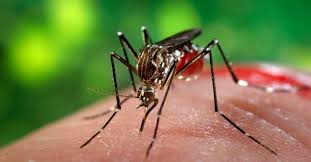Health officials across the Northeastern United States are on high alert as cases of Eastern Equine Encephalitis (EEE), a rare but potentially fatal mosquito-borne virus, continue to rise. Commonly referred to as “triple E,” the virus can cause severe illness in humans, horses, and birds, though it is not transmitted between humans. With eight states reporting human cases this year, concerns about mosquito-borne diseases are intensifying.
EEE: A Rare but Serious Threat
Eastern Equine Encephalitis is transmitted through the bite of an infected mosquito. Though most infected individuals do not develop symptoms, those who do can experience fever, headache, vomiting, and drowsiness. In severe cases, the infection can lead to encephalitis, a serious condition where the brain becomes inflamed. According to the Centers for Disease Control and Prevention (CDC), about one-third of people who develop severe EEE die, and half of the survivors experience long-term cognitive and physical impairments.
In 2024, 16 human cases have been confirmed across eight states, including Massachusetts, New Hampshire, New Jersey, New York, North Carolina, Rhode Island, Vermont, and Wisconsin. Most cases result from mosquito bites in environments near standing water, which serve as breeding grounds for mosquitoes. Among those infected, elderly individuals appear to be particularly vulnerable.
Rising Cases Prompt Preventive Measures
Several states have taken steps to combat the spread of EEE. In Massachusetts, health officials began mosquito spraying in two counties after an 80-year-old man contracted the virus. New Hampshire also confirmed its first EEE-related death in August, marking the state’s first infection in a decade.
New York, which reported its first case and death since 2015 in Ulster County, has declared an imminent threat to public health. Governor Kathy Hochul has mobilized state resources to assist local health agencies with preventive actions, including mosquito spraying, the distribution of insect repellent at state parks and campgrounds, and public education campaigns about the dangers of mosquito bites.
“EEE cases in horses have helped us gauge the presence of the virus in different regions,” said Bryon Backenson, director of the New York State Department of Health’s Bureau of Communicable Disease Control. “While humans and horses don’t transmit the virus to each other, monitoring horse cases allows us to track how active the virus is.”
In 2024, New York saw an unprecedented 20 cases of EEE in horses across more than a dozen counties, underscoring the need for continued vigilance.
Climate Change and Mosquito-Borne Diseases
The rise in EEE cases is part of a broader trend linked to climate change. Warmer temperatures and increased rainfall provide ideal conditions for mosquito populations to thrive. “Climate change is one of many factors contributing to the rise of vector-borne diseases like EEE,” said Dr. Erin Staples, a medical epidemiologist at the CDC. “Changing weather patterns can impact both mosquito and bird populations, increasing the risk of diseases.”
Sen Pei, an environmental health expert at Columbia University, noted that climate change-related events like hurricanes can exacerbate the spread of mosquito-borne diseases by altering where and how people live. “After disasters, monitoring vector-borne diseases becomes even more critical,” he emphasized.
Preventing EEE: What Residents Can Do
Since there is no vaccine or specific treatment for EEE, public health officials are urging residents to take precautions. These include using insect repellent, wearing long sleeves and pants outdoors, and avoiding outdoor activities during peak mosquito activity at dawn and dusk. Draining sources of standing water around homes, such as bird baths and flowerpots, can also reduce mosquito breeding grounds.
As mosquito-borne illnesses continue to pose a threat, particularly in the Northeast, the public is reminded that prevention and awareness are crucial in mitigating the spread of diseases like EEE and protecting both humans and animals.












